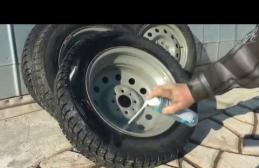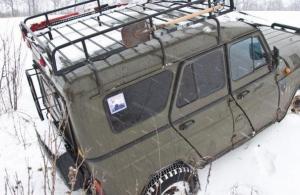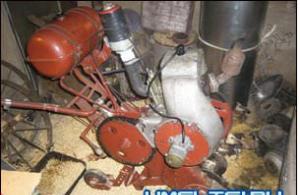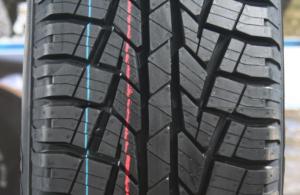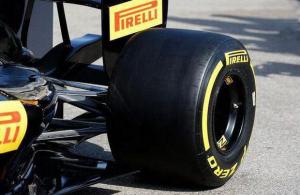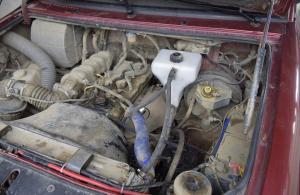Travel on own car Is one of the smartest and most attractive vacation options for many motorists. Someone goes to have a rest at the dacha, someone prefers picnics, and some go on a trip to the sea by car or visit other countries. And regardless of the route chosen, a necessary stage of the upcoming trip is to prepare the car for a long trip, so as to avoid troubles on the road.
How to prepare a car for a long trip in the summer: assessing the appearance of the car
A machine is a complex mechanism in which everything is interconnected. Therefore, any malfunction, even the smallest, can become a serious embarrassment and ruin your holiday. Checking the car should start with an assessment appearance since after long winter with constant temperature fluctuations may suffer paintwork or lighting fixtures.
First you need to thoroughly wash the car and inspect the body for chips or other defects. If damage is found, it must be removed by polishing, if deep scratches- perform local recovery. Then it will not hurt to inspect the windows and headlights of the car. If cracks appear on them, you can correct the imperfections with photopolymers or carry out processing with a polishing paste.
When figuring out how to prepare for a long trip by car, you should pay attention to the fact that the most important components vehicle include its moving parts. Tire pressures and rubber integrity should be carefully checked - even if they are not a concern on visual inspection.
Checking technical fluids
Before a long trip, be sure to check the fluids:
- brake fluid;
- engine oil;
- coolant (antifreeze, antifreeze).
- If the engine oil has been changed recently (within the last several months), it should be topped up to the level specified by the manufacturer.
- When between 1 and 2 thousand kilometers of mileage remains before the oil change according to the plan, it is recommended to change it before the trip.
- It is enough to add a summer "washer" or ordinary water to the windscreen washer tank.
- It will not be superfluous to check the air conditioner for the content of freon if you want to avoid a trip in a hot car.
- It is also necessary to make sure that the oil level is sufficient and transmission fluid in steering. If there are not enough of them, it is necessary to inspect for the occurrence of a leak.
Checking tires
After checking the fluids, the motorist should pay attention to the tires. First of all, check the pressure for correctness. Standards modern cars listed on the gas cap. It is also necessary to check directly the condition of the tires.
Lighting check
Everything is simple here. Turn on one by one parking lights, turn signals, low / high beam, etc. If any device does not work, you need to replace the bulbs yourself or visit a car service.
Diagnostics of the engine, battery
In the summer, the battery wears out faster because it doesn’t use all its capabilities. In order to exclude this problem, you need to periodically repeat training cycles in which the device is fully discharged. It is recommended to perform a charge check at the start right before the road - if the results do not correspond to the manufacturer's parameters, you should consider replacing the battery.
Brakes, Suspension and Steering Inspection
Preparing the car for a long journey should include an element such as checking the brakes. They should function without failure, so if in doubt, it is advisable to consult a professional. Inspection should also be performed steering and pendants.
What must be in the trunk?
In the trunk of any car in mandatory the following things should lie:
- fire extinguisher;
- first aid kit;
- sign emergency stop;
How can tools and spare parts come in handy?
Everyone decides for himself what to take with him on a long journey. If the trunk is large and there is room, then it is better to play it safe and take stock. You can take with you:
- spare wheel;
- wheel change tool kit: matching wrench and jack;
- tire puncture repair kit, compressor;
- "Cold welding", electrical tape, a set of clamps (for repairing the cooling system);
- towing cable;
- wires for "lighting";
- set of fuses;
- spare set of candles;
- spare headlamps;
- tools at your discretion (a set of keys, screwdrivers, pliers, etc.);
- a set of napkins, rags;
- several gloves;
- sapper shovel.
What do you need to take on a car trip to the Black Sea?
On a long trip, you need to prepare water and food so that you do not have to look for roadside shops or cafes on the way.
Matches, a lighter, a folding knife may come in handy.
The flashlight will help in case of an emergency stop, in case of a problem with the car at night.
Use warm throws and small pillows. Passengers will be much more comfortable with them, and long road will be easier to carry.
Don't forget to take charging device for phone, laptop.
Check the weather. Wherever you go, you may need both light and warm clothes.
Write down phone numbers and addresses of services in advance technical assistance located along the way.
Ensuring the comfort and safety of children - preparing the car for a long trip
If you are going to go to long journey together with children, the need to provide them with maximum comfort and safety is of particular importance. According to the valid on the territory Russian Federation rules road traffic, children under the age of 12 must not be transported without use special devices- special belts or child seats.
Make sure the selected seat is suitable for the child's weight and height and that it is properly secured. In this case long way will not be debilitating.
It must be remembered that the child will have to spend a lot of time in the salon, and therefore he must feel comfortable and be protected from direct hits. sun rays... If there are no curtains on the windows of the vehicle, it is recommended to install them. If possible, try to make frequent stops every 2 hours in extremely hot weather.
How to arrange your luggage correctly
An important step in getting your car ready for your trip to the South is correct location luggage. Competently placed things in the trunk and in the cabin will ensure the safety and comfort of passengers and the driver on the road.
Essentials must be placed within the vehicle's passenger compartment within easy reach. It is recommended to place heavy and bulky objects at the very bottom. luggage compartment to keep the center of gravity as low as possible. The heaviest items should be placed in the front of the luggage compartment and should be as close as possible to each other and to the sides of the luggage compartment in order to distribute the weight evenly.
It is recommended not to carry luggage inside the car, as even the lightest items can harm passengers and the driver in the event of emergency braking getting a significant speedup. When using the station wagon, do not load luggage compartment higher than the seats, because this reduces the visibility of the road, and when hard braking all items above the seats will end up in the passenger compartment, posing a threat to passengers.
Good luck on the road! Not a nail, not a rod!
So, you have decided to set off on a journey on your trusty iron horse! Of course, your car is reliable and has been driving regularly for months / weeks / years on the streets of your beloved native city and its environs. Can anything happen far from home cozy nest? Only new impressions, new acquaintances, drive! But ... is everything really so great?
So that there are no surprises, and troubles do not interfere with a pleasant pastime, the car needs to be prepared for a long trip! At least it never hurts to check something and stock up on something.
By the way, in our country it is customary to travel by car (in winter you can't go far on a bicycle, but if you want to see Baikal or the Pacific Ocean?).
Check out the simplest things first: whether the rear-view mirror is working properly (you will need it for any desired maneuver - do not forget to look into it every time you are going to do something) and brake lights, adjust the headlights. Maybe it's time to install the fog lamps? In a city it seems like a trifle, but on the highway, and even at night, it can lead to an accident.
Replace expendable materials: engine oil, brake fluid, filters, candles, belts, brake pads. Even if you changed everything six months ago and nothing squeaks or whistles. It would be nice to check the level of fluids in your car - antifreeze, oil, brake fluid - and grab a safety stock, since situations may be different, everything will come in handy.
You cannot save on yourself, especially on your own safety. The extra 500 rubles won't make you feel good, and the prospect of messing around with the car on the track hardly looks tempting, especially in winter time years, you can quickly turn into a Bigfoot.
Also, do not be stingy to make wheel alignment., so as not inadvertently taken away into a ditch on the road. And pay attention to the rubber. Suddenly it is badly worn out. Then it should be replaced.
Pay particular attention to the braking system. Cracked brake hoses replace with new ones, eliminate brake fluid leaks, check brake discs and pads.
Make sure that the suspension and chassis v all right, including rubber boots and covers, whether it is necessary to replace shock absorbers, springs, silent blocks of the front levers, ball, rear suspension levers.
The "brain" of the machine is the engine. Adjust everything that is subject to adjustment and is adjusted during operation (clearances in the valve mechanism, tension of belts and chains, ignition timing, carburetor, radiator, cooling fans).
If there is a possibility - both financial and in time - drive the car to the service and give it to the caring hands of specialists. Traveling is a serious test for your iron friend, so all his "horseshoes" should be in a state as close to ideal as possible.
Have everything been repaired, checked? Wonderful. But this is not a guarantee that everything will be all right. What you need to take with you "just in case of fire." It all depends on which one of you is a specialist in the field of auto mechanics.
If you do not know much, then it is enough "classic" set: first aid kit (check the expiration dates of medicines!), rope, warning triangle, fire extinguisher and canister. If you are able to repair the car yourself on occasion, then the list will be long. The tool will always come in handy. We take keys and heads from 8 to 24 mm, the car is full of all sorts of bolts and screws - you never know what you need to unscrew and screw on. Candle wrench, screwdrivers, pliers, a jack, a pump, files, sandpaper will not be superfluous either - what if ... And it is important that this is not all scattered around the trunk and the car as a whole., but neatly folded into a small bag or plastic box.
Do not forget to bring atlases and maps with you. With their help, work out the best route - calculate the gas mileage in advance. In addition, you can immediately select for yourself some priority places that you definitely need to visit. Calculate your speed and think about where you would like to stop. It is better to choose them closer to settlements or traffic police posts. Just in case. Better yet, install a navigation device in the car. GPS system... For such a journey, this is the most irreplaceable thing. If in the city it is still possible to dismiss them contemptuously - this is for people suffering from topographic cretinism, who cannot distinguish Polyanka Street from Yakimanka Street - then one cannot do without a navigator while traveling. And if you are a solid person, and a simple navigator does not suit you, you can install a real computer in the car (Why? A smart idea!). This is DVD, and MP3, and the connection with the whole world!
Continuing the conversation about electronics in the car - think about how you will communicate mobile phone ! A mobile in the hands of a driver is a potential cause of an accident. At speeds over 100 km / h, the slightest inattention can cost you and your companions their lives. Use wireless hands-free and speakerphone.
Does your car have a device to power chargers, shavers, laptops? There are a huge number of them on the market. Choose the one that suits you best and install it in the machine.
Of course, in addition to the "smart" and necessary technology, you can also install in the car ... for example, a portable coffee maker, refrigerator, massager in the driver's seat and much more. Although ... everyone decides for himself. It is much more pleasant to stop on the track and drink coffee from a thermos, looking at the cars rushing by. And don't forget that every extra kilogram in the car, albeit not much, will still increase fuel consumption, which, given the long distances, can eventually result in a tidy sum.
Pay attention to which roads you have to drive: asphalt or dirt road. It is important to be ready to change. road surface, although winter blizzards more often "level" it.
Gasoline, of course, fill the tank full.
All things for the trip must be collected one day before your departure. When packing in a hurry, you risk forgetting something. Therefore, there will be time to remember and recheck everything.
The driver needs to get a good night's sleep before traveling. At least 9 - 10 hours. The road takes a lot of energy, which should be stocked up in advance.
And do not forget to turn to heaven before the trip (as did all our ancestors and contemporaries, by the way, too).
It is better to leave in the predawn twilight so that in the day you can drive as much distance as possible, and in the evening you can stay overnight.

The most dangerous time of day for traffic is sunset and sunrise. Be prepared, do not take ill-considered actions. Stops should be made at least every 400 - 500 kilometers. By the way, if there are several people in the car, it is recommended to change the driver also every 400 - 500 kilometers.
And do not forget to follow the Traffic Rules - your life and health and your passengers depend on it. Road markings make life easier. Now all over Russia, and even more so in European countries, the markings can be seen perfectly even in winter. Believe me, it was not drawn for beauty, it is necessary for you - travelers.
Subject to these simple rules, any trip will bring you real pleasure!
Bon voyage and new bright impressions!
When going on a long journey, remember: so that a vacation by car does not turn into a living hell, you need to prepare well. Packing your bags is, of course, important. But the most important thing is how to check technical condition car and prepare in advance for all kinds of surprises.
You should start collecting at least one week before your trip. After all, it often happens that the expiring driving license either insurance is found in the most last moment... Is the "paper" question settled? Then let's move on to the car.
How long have you serviced your car? If there are not so many kilometers left before the next MOT, it is better to make a visit to the service in advance. If you prefer to do the repairs yourself, change the oil and filters, check the level of all process fluids. Remember: how long have you changed your brake fluid? Many people do not pay as much attention to this as they should. The fact is that brake fluid possesses hygroscopicity. That is, it “sucks in” water vapor from the air. This lowers its boiling point. Under heavy braking this can lead to bubble formation and failure. brake system.
Also check the status brake pads and disks, tire pressure. Examine them carefully from the outside and inner sides for cuts and hernias.
Now about the things you need on the road. Make sure your first aid kit and fire extinguisher are in order. Be sure to take with you minimal set tools: screwdrivers, wrenches, etc. It will not be possible to carry out a full-fledged repair on the road, but minor malfunctions, such as a torn alternator belt or a blown fuse, can be eliminated quite realistically.
On the road, a towing cable, a compressor for tires, a tire sealant, spare lamps, fuses, a 5-liter canister and a reflective vest will not hurt.
An inverter is a very useful travel accessory. This device converts on-board voltage of 12 volts to household 220 volts. There are many models of converters - from inexpensive, with a capacity of several hundred watts (for connecting small electronics), to several kilowatts, to which even powerful electrical appliances such as refrigerators, televisions and others can be connected.
Make sure that the maps in your navigator are exactly where you are going. Don't rely on a smartphone using online maps. After all, you may not have access to the Internet on the way.
Take care of the problem of organizing mobile communications in advance. Make sure you have sufficient funds in your account. Save emergency numbers on your phone.
Even if you're used to always paying off by plastic card, be sure to carry with you a sufficient supply of cash. I once found myself in a situation where I had to run around the city in search of an ATM, as my card was not accepted at the gas station.
All luggage must be securely fastened. This is especially true for station wagons. After all, objects flying out of the trunk during sudden braking or an accident can cause serious injuries to the driver and passengers. For a secure fit, ratchet straps are ideal. Also, a set of plastic cable ties will be useful.
Once away from home, do not leave the car unattended for a long time. The fact is that for the thieves who hunt for theft car numbers, car owners from other regions are the most coveted prey. Such a "victim" is almost guaranteed and very quickly wants to "buy back" his license plate back.
Be attentive and happy journey!
Photo by RIA Novosti / Vitaly Ankov
You already feel confident driving while driving around the city, or you are not yet very confident, but assume that by the beginning of the next vacation season, you will have developed the appropriate practice. Almost every novice driver, even just sitting behind the wheel, has plans for his first long trip. The charm of the oncoming road, new impressions, freedom in choosing a place of rest, as well as the absence of dependence on the timetables of buses, trains, airplanes, etc. ample opportunities baggage collection, not limited, as before, only by your muscle strength and by the number of hands, as if they themselves are pushing: "Go, go, go ...".
How experienced driver, I will say - expectations do not deceive you. But if on the one hand, long journey by car is a really exciting adventure, on the other hand, it is a serious and responsible event that requires careful preparation. Ride on long distance(500 km or more) is fundamentally different from city driving, and if you are not ready or miss something, instead of joy, it can bring you, best case, unnecessary worries and problems. Now let's take a look at everything in detail:
Preparing the car for a long trip
The first thing to do is get the car ready. Three to four weeks before the estimated time of departure, show the car to a service station or a mechanic you trust. Let them examine it, diagnose the chassis, tighten all the connections, replace everything that requires replacement, and adjust the camber / toe-in. Ask the masters to convert Special attention on the reliability of the braking system and steering.
Be sure to make sure that the tread on the tires of the car is not frayed and that the tires are appropriate for the season. Balance the wheels and equalize the pressure in the tires (this can be done at any point "tire fitting"). Naturally, your car should be equipped with a "fresh" first aid kit and a fire extinguisher, an inflated spare wheel, a jack, tow rope and an emergency stop sign.
After all the events have been carried out, do not put the car "on the road". It needs to be well "run in" around the city, so that all the new details get used to and have time to show minor flaws. Before the trip, you will still have time to fix them.
Determining the route and communication
A GPS navigator is a very useful device and I advise you to definitely purchase it, but it is not reasonable to rely only on it, especially if you are not an advanced user of such devices. To be sure, plot a route on the map beforehand. For this purpose, you can use the special services of Google or Yandex. Pay attention to difficult junctions, branches and turns. If possible, print out the entire route, and on an enlarged scale the most difficult sections.
When planning a route from all possible routes, choose the largest roads and do not listen to "experts" who will persuade you to go by roundabout ways, where it is "faster and freer."
There are more gas stations, stations on a busy highway Maintenance, first-aid posts and almost always mobile communication works. Therefore on major road you are ten times more likely to receive timely assistance than in the middle of a field or forest, where one car passes an hour.
“Appoint” someone from the family or friends who stayed at home as the “dispatcher”. This is the person who will know the route of your movement, and to whom you will inform about the distance traveled. Establish a clear communication schedule. For example, say that you will send SMS every three hours indicating the distance traveled or the name of the nearest settlement.
During the trip, strictly adhere to the communication schedule with the "dispatcher". Such a simple precaution, on the one hand, will allow you not to be distracted by “calming” calls to your mom, grandmother, sister and friend at the same time, and on the other hand, it will give you the opportunity to quickly find you if something unexpected happens when you cannot report. where you are and what happened to you.
Determine the time of departure
A trip over a distance of 1000 km will take you approximately 12-14 hours (subject to the speed limit according to the rules of the road). For the summer, this time is enough to leave and arrive before dark, but I do not recommend doing this, and here's why.
If you are driving to the South, then the sun will shine in your face for most of the trip, and if - to the North, then you will encounter such a phenomenon as bright blinding sun glare from rear windows cars ahead of you.
The tracks are much more busy during the day than in the evening, night or morning. Finally, I don’t think it’s very good to arrive in the evening, when the coming darkness will "urge you on".
Plan your visit to dark time days, so as to arrive in the morning before lunch. Do the same if the length of the trip inevitably forces you to cover part of the journey at night. In a nutshell - while driving, you can meet the sunrise, but not the sunset.
Before leaving
You need to rest well before traveling. About a day before leaving, you should be free from any work. During this period, your work is rest, mainly lying down. Sleep as much as possible, do not sit at the computer, do not read, and try not to watch TV. Instruct your friends, family, and loved ones not to disturb you over trifles.
You don't have to gorge on before the trip. The last meal is no later than 4 hours before check-out.
What to take with you on the road?
Buy several small bottles of clean, still drinking water. You will need to replenish your fluid reserves throughout the trip, even if you are not thirsty. Dehydration on the road occurs imperceptibly, which is fraught with a decrease in attention and a slower reaction.
Prepare a few wedges of fresh lemon (no sugar). A lemon slice placed under the tongue perfectly “drives away sleep” and improves visual acuity. I do not recommend using the energy drinks that have become popular in our time, because most of them are bad for the stomach, and the effect is very dubious.
To satisfy your hunger while on the road, you can use chocolate or protein bars.
Discipline, safety and your passengers
If you are not traveling alone, explain to your passengers that you are the “captain of the ship” and are responsible for everyone on board. Their life and health primarily depends on you, therefore all actions of passengers should be aimed at creating maximum comfort for you, not for yourself. Based on the above, you:
- determine what music will play and at what volume;
- decide when and where the next stop will be;
- seat passengers in the car;
- distribute luggage (what, where and how it will lie).
Ask your companions to inform in advance about the need to go to the toilet, and do not force you frantically to look for a place to stop when it became "unbearable".
Sit next to you a person who will share with you the "hardships" of a long trip, or, more simply, will entertain you with conversations, serve water, light a cigarette and not sleep.
Move the first aid kit and fire extinguisher to the passenger compartment, so that they can be reached without leaving the car. In many cases, the seconds you spend getting out of your car, opening the trunk, finding and pulling these first aid supplies from under your bags and bags can be crucial.
Everyone in the car must wear seat belts. An unfastened person at the time of a collision can not only injure himself, but also injure or even crush other people in the car, especially children, to death.
2011-09-15
